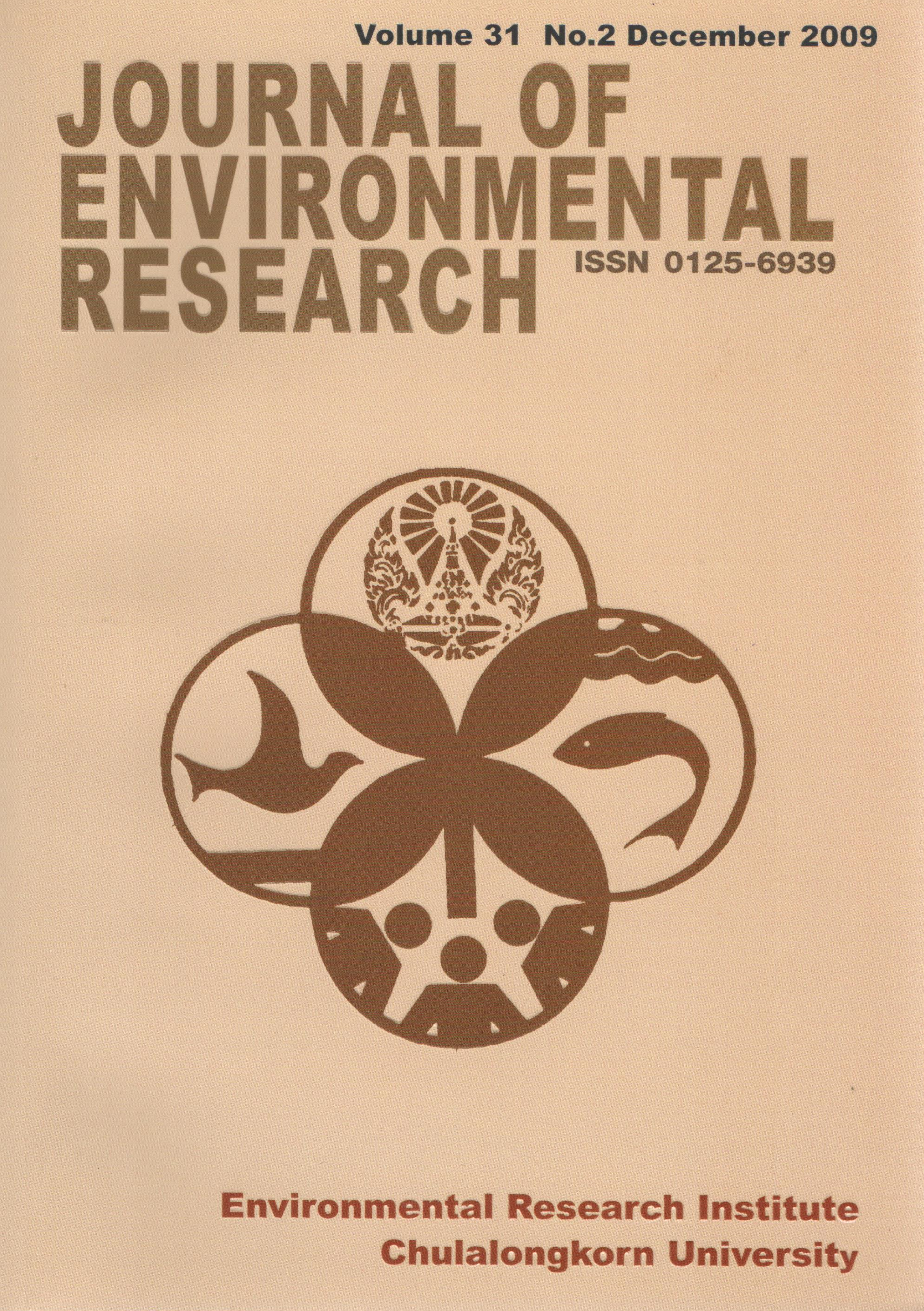A Preliminary Study on Total Volatile Organic Compound (TVOC) Concentrations in Public Buses in Bangkok
Main Article Content
Abstract
Recently, some new buses made in China have been purchased to give the transportation services in Bangkok due to their lower price. Unfortunately, volatile air pollutants emitted from material in new motor vehicles was little concern. The objective of this study was to conduct a preliminary survey of total volatile organic chemicals (TVOCs) in the cabins of some new buses used in public transportation in Bangkok. TVOCs was monitored in the air-condition buses running within Bangkok area under actual driving condition. Three buses were randomly sampled from three routes, i.e. the route number 8, 539 and 542. All of sampling buses were manufactured in year 2007 using EURO II diesel engine criteria. In addition, a used bus made in Japan (from route number 515) was randomly selected for a background comparison. The results of the monitoring showed that all four buses contained TVOCs concentrations ranging from 1.40-3.74 mg m-3, which exceeded the US EPA maximum allowable indoor air concentration standard of 0.20 mg m-3. TVOCs found in the new buses were higher than the used one because newer material of in-vehicle ornament would possibly release much more TVOCs. There may be the relationship between the mileage (or driving duration) and TVOCs level, however, too few samples were taken might not be enough to prove any relationship. Besides, emission for other sources such as fuel leakage and infiltration of contaminated from ambient air was uncontrolled. In conclusion, the result provided important information on TVOCs concentration in the passenger cabins of public bus.
Article Details

This work is licensed under a Creative Commons Attribution-NonCommercial 4.0 International License.
Published articles are under the copyright of the Applied Environmental Research effective when the article is accepted for publication thus granting Applied Environmental Research all rights for the work so that both parties may be protected from the consequences of unauthorized use. Partially or totally publication of an article elsewhere is possible only after the consent from the editors.

